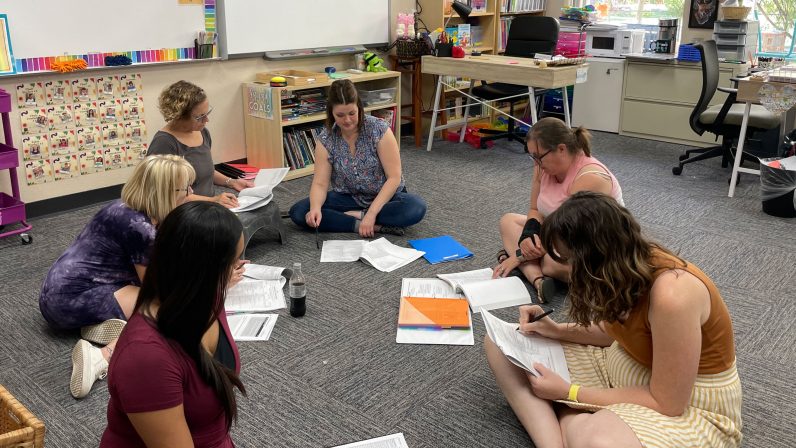We often talk about our emergent curriculum, especially with new incoming families. It’s described on our website as “an organic approach to learning that incorporates the interests and passions of children, their teachers, and relevant issues or current events.” We use it because “it offers children and teachers the most autonomy as learners. Using an emergent curriculum keeps learning fresh, lively and directly connected to the group of students involved. It is local and tailored to meet the educational needs of a specific classroom. The emergent curriculum empowers learners to follow their passions. It enables the teachers and students to study topics that stimulate curiosity and wonder.”
What is less discussed is how we use it with our staff. We are a group of persistent learners, always striving to refine our practices as teachers. Historically, this has been the case since the Seed was established in 1977. For decades we have explored different approaches to literacy, discipline, and systems of teaching and learning. As issues arise, we look for solutions that best meet the needs of our students and staff. Each year we develop staff development goals that will support our school as a whole. We’re always in a state of evolution.
For the past several years social justice has been a focus of our work. As it’s become more integrated into our everyday lives, we’ve shifted to looking at ways we can more fully support our varied group of students and the teachers who are working hard to meet their needs. Most recently, we’ve talked about behaviors and giving children the skills to express their social-emotional needs in healthy, productive ways. Drawing on a number of resources, including podcasts from Dr. Becky Kennedy, our work seems to be unfolding in the direction of how to best teach children the skills they need to successfully express their emotional needs, and to be socially well-rounded humans as they grow up. As long as the Seed’s been in operation, we’ve believed and communicated the idea that until a child feels emotionally secure, it’s difficult for them to progress fully in their academic skills. Where we are now as a staff is exploring how we can refine our practices to ensure that all children feel safe and connected in a way that enables them to reach their fullest potential.
While reading Weissberg’s article, “Why Social and Emotional Learning is Essential for Students,” I was struck by how the described Five Keys to Successful Social and Emotional Learning (self-awareness, self-management, social awareness, relationship skills, and responsible decision making) are also significant elements of social justice learning for children. It feels like we’re on the right track, approaching what we believe is best practice for children in new and refreshing ways. As we learn more about teaching social and emotional skills, we’ll definitely pass it along. A shout out to Mindy, who is spearheading this inquiry process.

